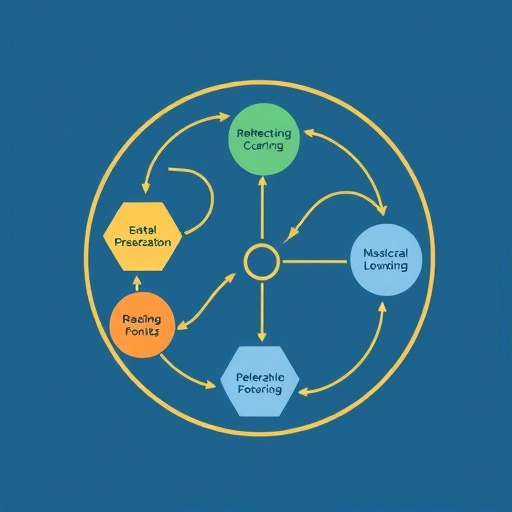In the realm of modern medicine, the notion of prescribing cascades has emerged as a topic of increasing relevance, particularly in the context of geriatric care. The intricacies involved in the treatment of elderly patients, who often present with multiple chronic conditions, can sometimes lead to unintentional consequences known as prescribing cascades. This phenomenon refers to the initiation of new medications to treat adverse effects caused by previously prescribed drugs, ultimately leading to a complex web of drug interactions and further complications.
The concept of prescribing cascades is significant, especially considering the demographic shifts towards an aging population. As people live longer, the prevalence of polypharmacy, or the use of multiple medications concurrently, also rises. This has prompted healthcare professionals and researchers to delve deep into the implications of such practices. The article “Prescribing cascades: do we need this construct?” authored by Rochon, O’Mahony, Cherubini, and their colleagues addresses this important construct head-on, questioning whether the term itself is necessary or if it draws attention away from more critical issues related to medication management in older adults.
One of the focal points of the discussion is the need for better understanding and communication between healthcare providers, patients, and caregivers in managing prescriptions for elderly individuals. The article argues that the current framework surrounding prescribing cascades may not fully encapsulate the complexities inherent in geriatric pharmacotherapy. By framing the conversation within the context of prescribing cascades, there is a risk of oversimplification, possibly leading to inadequate solutions that fail to address the multifaceted nature of medication management in older adults.
Moreover, the adverse effects associated with polypharmacy are compounded by the fact that older patients often have unique physiological responses to medications. Age-related changes in pharmacodynamics and pharmacokinetics can alter how medications are metabolized and eliminated, creating a landscape where standard dosing may not be appropriate. This inconsistency in medication response can lead to significant challenges in clinical decision-making, making the careful consideration of each patient’s medication regimen even more crucial.
The authors of the article highlight the pivotal role that comprehensive medication reviews play in mitigating the risks associated with prescribing cascades. A deliberate evaluation of a patient’s complete medication list allows healthcare professionals to identify potential interactions and adverse effects before they become problematic. This proactive approach not only improves patient safety but also enhances the overall efficacy of prescribed treatments.
Another critical aspect discussed in the article is the importance of patient education and engagement. Educating patients about their medications, including the potential risks and side effects, empowers them to participate actively in their care. When patients understand the rationale behind their prescriptions, they are more likely to report adverse effects and collaborate with their healthcare providers to find solutions. This partnership can significantly reduce the likelihood of initiating a prescribing cascade.
The dialogue surrounding prescribing cascades also intersects with the broader discourse on quality of care and healthcare resource allocation. As medical professionals strive to provide the highest quality of care, they must also navigate the complexities of healthcare systems where resources are limited. The question posed in the article is whether the focus on prescribing cascades is beneficial or if it detracts from addressing other pressing concerns within geriatric medicine.
In terms of policy implications, the discussion puts forth the idea that prioritizing the understanding of prescribing cascades could influence guidelines and recommendations regarding medication management for older adults. Health policymakers should consider the complexities of the issue when developing strategies aimed at improving geriatric care. Addressing prescribing cascades may establish a framework for more effective communication and collaboration among healthcare teams, potentially leading to better health outcomes for patients.
In conclusion, while the concept of prescribing cascades is gaining attention in the field of geriatric medicine, it remains critical to unravel its implications thoroughly. Rochester et al.’s commentary encourages a collective re-evaluation of how prescribing practices interact with the nuances of aging and medication management. By engaging in open dialogues about these issues, the healthcare community can better serve its elderly population, ensuring their medication regimens are safe, effective, and tailored to their unique needs.
The inquiry into whether we truly need the construct of prescribing cascades does not dismiss the potential risks associated with polypharmacy. Instead, it advocates for a deeper exploration of the underlying mechanisms that contribute to medication-related complications in older adults. Moving forward, the challenge lies in creating an integrative approach that prioritizes patient safety, engaging communication, and informed decision-making while navigating the complexities of geriatric pharmacotherapy.
As research continues to evolve in this domain, it is essential for healthcare providers to remain vigilant in their practice, continuously refining their understanding of the impact of medications on older adults. The insights gleaned from this discussion will undoubtedly contribute to more informed, patient-centered care, reducing the likelihood of adverse drug events, and ultimately enhancing the quality of life for an aging population.
In sum, the conversation surrounding prescribing cascades and medication management in geriatric care is multifaceted and warrants ongoing attention from the medical community. As the quest for improved outcomes continues, engaging with concepts like prescribing cascades will not only deepen our understanding but also drive meaningful change in practice, policy, and education.
With the increasing complexities of healthcare, embracing a collaborative, informed approach will serve to empower both patients and providers, fostering a more comprehensive understanding of the implications of medication use among older adults. As researchers and clinicians seek to refine the constructs that guide geriatric care, we must remain open to questioning existing paradigms and advocating for the best practices in the face of ever-evolving challenges.
Ultimately, the health and well-being of older adults depend on our ability to critically assess and enhance the systems that support their care. By addressing the dynamics of prescribing cascades and the broader landscape of medication management, we can pave the way for safer, more effective treatments for the aging population, ensuring that their golden years are marked by health, happiness, and dignity.
Subject of Research: Prescribing cascades in geriatric medication management.
Article Title: Prescribing cascades: do we need this construct? A reply.
Article References:
Rochon, P.A., O’Mahony, D., Cherubini, A. et al. Prescribing cascades: do we need this construct? A reply.
Eur Geriatr Med (2025). https://doi.org/10.1007/s41999-025-01315-8
Image Credits: AI Generated
DOI:
Keywords: Prescribing cascades, geriatric care, polypharmacy, medication management, healthcare policy, patient education.
Tags: adverse drug reactions in seniorscomplexities of chronic conditions in agingdemographic shifts in aging populationhealthcare communication in prescription managementimplications of multiple medicationsimproving patient care in geriatricsmedication management for older adultsnecessity of prescribing cascade conceptpolypharmacy in elderly patientsprescribing cascades in geriatric carereevaluating medication practicesunintentional drug interactions





